Late on in the collating (see previous post) I noticed these two copies of EC 91C – English Church Bells – had different matrix numbers. And I had to sit down to absorb this information.
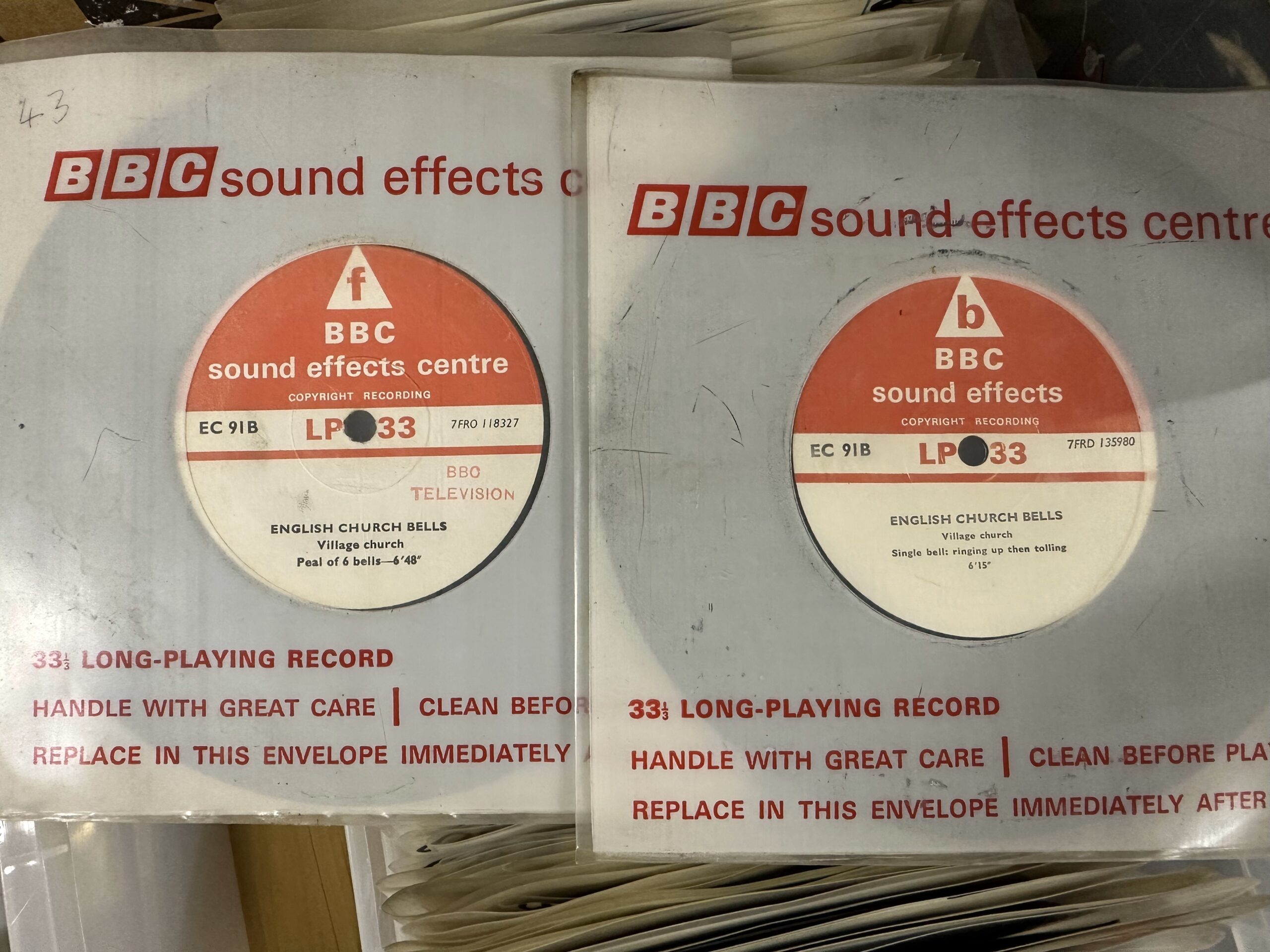
I was rocked back on my heels by this because it means an assumption I had about dating these records was wrong. I was assuming any represses would have used the same stamper and I can always rely on the matrix number to stay the same. But I was wrong. Not always.
As the years passed the BBC Sound Effects Centre moved around pressing plants. The metal stampers aren’t held by the BBC and the plants would only use their own, I assume. And so all the matrix number really tells us is roughly when that record was first pressed by that plant. A repress at the same plant might have reused old stampers and it might be of some interest to compare the label printing and sleeves of those. That’s another story though.
Anyway, back to these EC 91B records. I can date these different matrix numbers to 1966 and 1974. In this case I can be fairly sure that the record was originally issued in 1966 and then repressed in 1974. I figured this our by looking at lots and lots of other non-retail BBC records and building up a range of numbers for each year. It’s a work in progress but really locates the year pretty accurately.
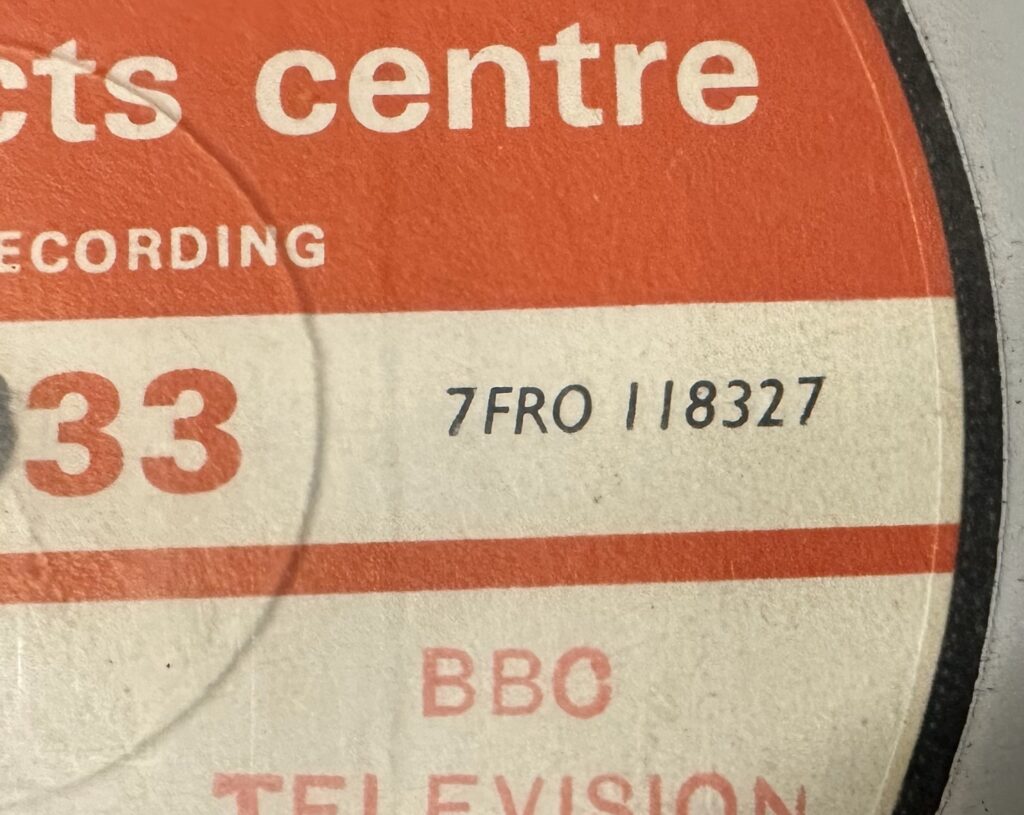
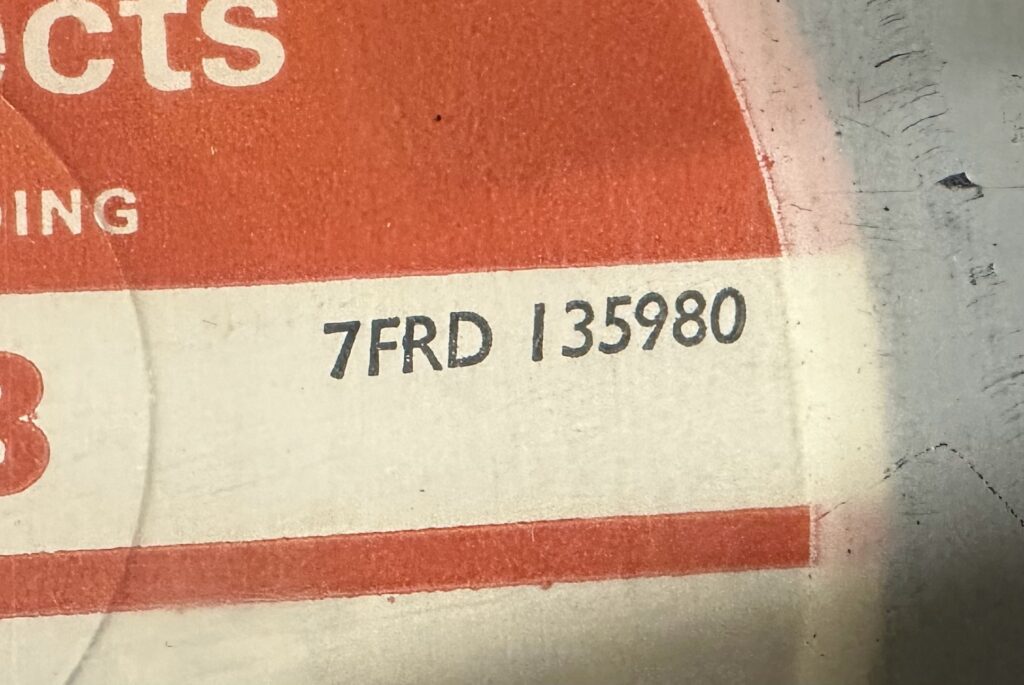
I have four copies of EC 91B. The earlier one pictured above has a BBC TELEVISION stamp and comes from a small batch I got from eBay several years ago. The ’74 one I think came from Moz. That means I should have Set A an d Set B copies that came from the mega donation. And here is the Set A copy.
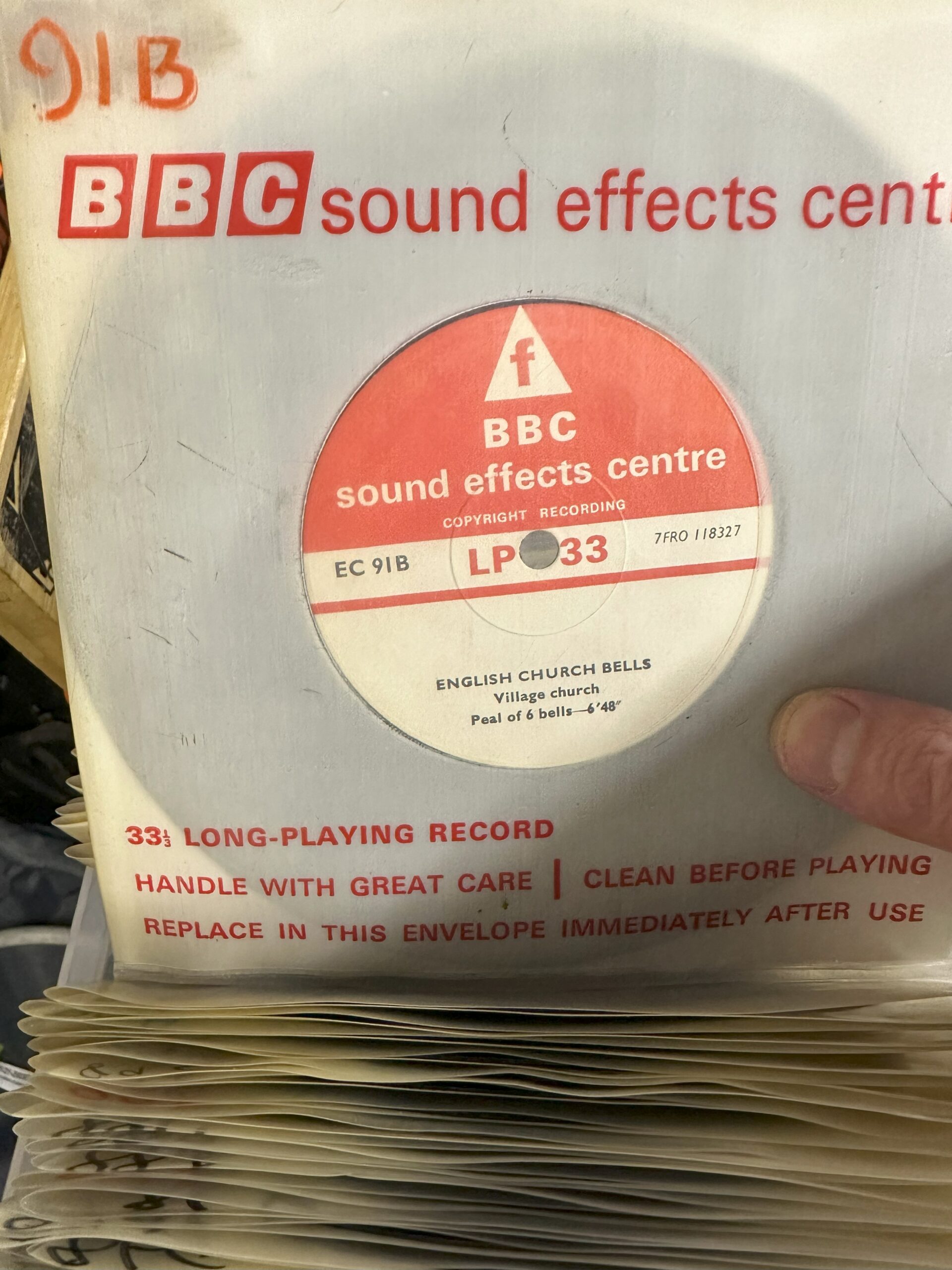
Note the marker pen red cat no. on the sleeve, which identifies it as part of that donation. The matrix number dates it to 1966 and it’s identical to the one shown above.
Now here’s the Set B one.
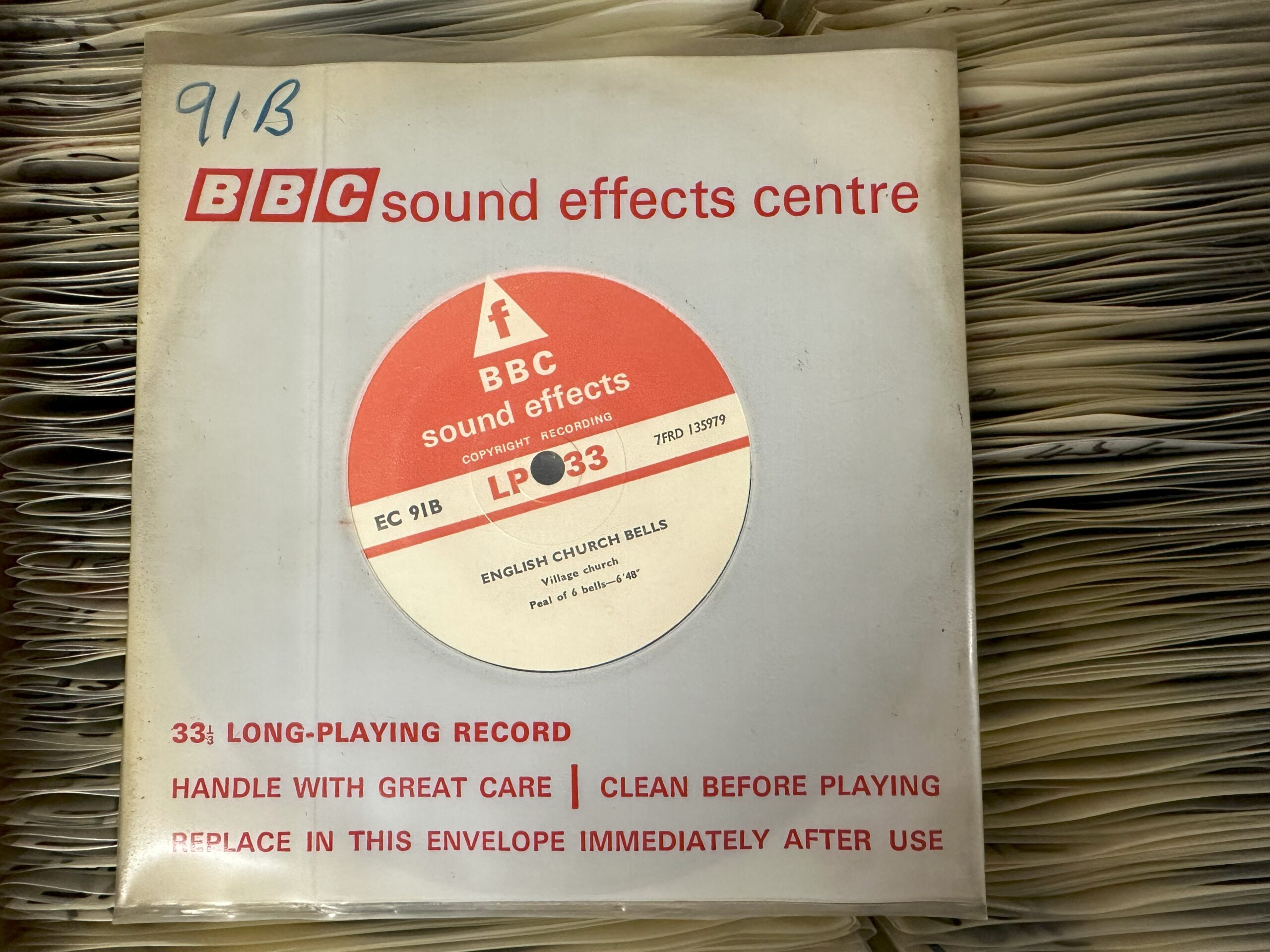
This one was stuck in its sleeve and once out was hard to get back in! But I did do so “IMMEDIATELY”, as instructed.
It’s a later 1974 copy. And it has a blue marker pen number on the corner of the sleeve, meaning it’s from the mega donation, but it is a later pressing. Jethro said he thought two sets had been combined to make the huuuuge donation, which is how I ended up with a large Set A and B.
The two I spotted as being non-indentical are in my duplicates boxes. The left-hand disc with BBC TELEVISION stamp, I think, came from my eBay set and may have been pressed at Orlake, (FRO) which opened in Dagenham in 1963. The right-hand one is from 1974 and came from the Moz donation, pressed at Decca. The printing is remarkably similar.
So what? Well, as I said. I can’t completely rely on the matrix numbers to date a catalogue number. If I only photograph one and that’s one with a later repress matrix number I’m going to get the wrong date. Even if I photo everthing I have – which is of course something I’d rather avoid – I might only own copies from a repress with a later matrix number! Arrrgh! That’s a shame as in a discograhy where the catalogue numbers are no help in dating the records the matrix numbers really do help to tell the story.
The good news is that upon checking a few more multiple copies I can see all kinds of represses that do have the same 1960s matrix numbers despite coming from clearly different eras of pressings. Different labels, sleeves and formatting. There are other interesting things in the other pressing differences too (honest!); that’s not for now though.

For those represses with completely different matrix numbers I have a trick or two up my sleeve to help with spotting the differences.
Firtsly though, one trick that I mustn’t play is thinking I can rely on the catalogue numbers being sequential. If the matrix numbers indicate that the catalogue runs A 1966, B 1974, C 1966, I can’t just assume I have a different plant repress of catalogue no. B and correct it to 1966. Nothing is that easy. I have seen gaps in the catalogue sequence filled some years later, so the algorithm for making such an assumption needs a bit of work.
However, I do think that if those A, B, and C catalogue numbers have the same matrix number prefix I can be more cetain. If they were all 7FRD, then they should all be Decca pressings and then, even though it seems unlikely that B appeared 8 years after A and C, that would seem to be the case. Now, I’d also be surpirsed to see a new matrix number from the same pressing plant, but I can’t rule that out completely either. Good stuff, eh!?
A very useful cross reference available to me is a catalogue from 1971, with a supplement from 1972, which I saw at the BBC Written Archive. If I find a disc with a matrix number for 1974, but it is in that earlier dated catalogue, I’m warned to set a lower limit on the release year. And, yes, EC 91B is in that catalogue so even if I only had the matrix number from 1974 I’d have know it was older than that. Oh, and you can see what was in the catatlogue via my super-simple first cut webpage here.
If I’m lucky a lot of the matrix numbers from represses will come from after 1971-72. This might seem to be overly optimistic, but thanks to that catalogue I can tell that the bulk of the mono EC catalogue was done by 1971. Then, as the market grew they repressed the old ones and maybe ordered larger quantities of the new ones to avoid repressing. That should make life a bit easier for your dedicated discographer!
I’ll see how this goes though. I have a good idea that they pressed up 150 copies of each record in the sixties, based on a memo from 2nd June 1965.
“it is hoped that in placing a high initial order of 150 pressings the need to re-order will be reduced to a minimum”.
This was the plan for the first five years anyway. The evidence of all the various repressing I’ve seen is that they went back to the pressing plant a few times.
That memo also says they are going for “4 x 7 inch couplings per week”. Interesting way of putting it! This should mean that I will find some groups of four records with consecutive matrix numbers. Eight numbers in fact, as every side has a number. It should also be quite clear what order records were pressed in and therefore probably what they thought most important to get done first.
In the extreme I might be able to place certain matrix numbers in halves or quarters of a year or even a certain month! But that really would be exceptional.
If all else fails I can do manual checks and guesswork. Some effects have a year for the recording, setting a lower limit on when it was released.
Having said all the above – and it was all kind of useful in terms of development in my understanding – I have to conclude that after checking more records I’m feeling happier that most records will stick to a single matrix number. I just need to remain alert for these represses!
